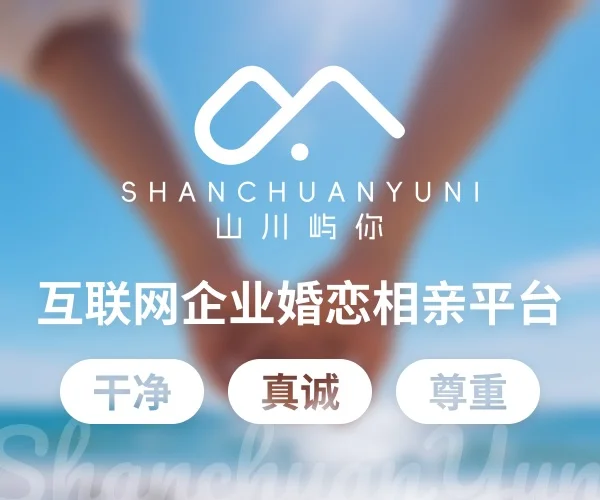http://www.hangge.com/blog/cache/detail_1845.html
一、UserNotifications 框架介绍
1,起源
- 过去我们通过 UILocalNotification 来实现本地消息的推送通知(Local Notification),或者利用 APNS 进行通知消息的远程推送(Remote Notification)。如果我们程序同时用到了本地通知和远程通知,会发现它们的 API 都被随意地放在了 UIApplication 或者 UIApplicationDelegate 中,开发时代码十分混乱。
- 到了 iOS10,苹果新增加了一个 UserNotifications.framework(用户通知框架),目的在于统一 Remote Notification(远程通知)和 Local Notification(本地通知)。过去那些杂乱的和通知相关的 API 都被统一,同时也新增了许多新功能。
2,新特性
UserNotifications 框架除了整合通知相关的 API,还增加了很多令人惊喜的特性,让我们实现许多过去没法实现的功能。
- 更加丰富的推送内容:现在可以设置推送的 title、subtitle、body 以及符合大小的图片、音频、视频等附件内容。
- 更好的通知管理:过去已发出的通知不能更新。现在可以对通知进行查看、更新、删除了(哪怕是已展示通知)。
- 更优雅的展示方式:可以设置应用在前台展示通知,自定义通知 UI。
3,使用流程
UserNotifications 框架的使用大概分为以下几个过程:
- 申请、注册通知:首先需要向用户请求通知权限,在取得权限后注册通知。
- 创建、发送通知:然后创建一个通知并发起推送。对于远程推送 APNS 而言,还需要注册 DeviceToken。
- 展示、处理通知:在接收到推送通知后可以根据 app 的运行情况决定是否展示通知,当然也可以通过一系列的回调接口对通知进行处理加工。
二、通知权限说明
1,申请权限
(1)iOS 10 统一了推送权限的申请。不管是本地推送,还是远程推送,只需要 UNUserNotificationCenter.current().requestAuthorization() 方法申请即可。(这里我们在 AppDelegate 中申请通知权限。当然写在其它地方也是可以的。)
|
1
2
3
4
5
6
7
8
9
10
11
12
13
14
15
16
17
18
19
20
21
22
23
24
25
26
27
28
29
30
31
32
33
34
35
36
37
|
import UIKit
import UserNotifications
@UIApplicationMain
class AppDelegate: UIResponder, UIApplicationDelegate {
var window: UIWindow?
func application(_ application: UIApplication, didFinishLaunchingWithOptions
launchOptions: [UIApplicationLaunchOptionsKey: Any]?) -> Bool {
//请求通知权限
UNUserNotificationCenter.current()
.requestAuthorization(options: [.alert, .sound, .badge]) {
(accepted, error) in
if !accepted {
print("用户不允许消息通知。")
}
}
return true
}
func applicationWillResignActive(_ application: UIApplication) {
}
func applicationDidEnterBackground(_ application: UIApplication) {
}
func applicationWillEnterForeground(_ application: UIApplication) {
}
func applicationDidBecomeActive(_ application: UIApplication) {
}
func applicationWillTerminate(_ application: UIApplication) {
}
}
|
(2)当第一次调用上面这个方法时,系统会弹出如下窗口询问用户是否授权。
![原文:Swift - UserNotifications框架使用详解1(基本介绍,权限的申请与判断)]()
![点击并拖拽以移动]()
(3)如果用户拒绝了这个请求,再次调用该方法也不会再进行弹窗,同时也就无法收到通知。这种情况如果想要应用能接收到通知的话,只能让用户自行前往系统的设置中手动为你的应用打开通知了。因此在合适的时候弹出请求窗,并预先进行说明是很重要的。
2,判断权限
(1)在有些情况下,我们可以对推送权限设置进行检查。比如在检测到用户把通知权限关闭的时候,弹出个提示框引导用户去系统设置中打开通知权限。
比如下面代码,用户如果点击了“设置”按钮,则会自动跳转到通知设置页面,方便用户设置。
![原文:Swift - UserNotifications框架使用详解1(基本介绍,权限的申请与判断)]()
![点击并拖拽以移动]()
![原文:Swift - UserNotifications框架使用详解1(基本介绍,权限的申请与判断)]()
![点击并拖拽以移动]()
![原文:Swift - UserNotifications框架使用详解1(基本介绍,权限的申请与判断)]()
![点击并拖拽以移动]()
|
1
2
3
4
5
6
7
8
9
10
11
12
13
14
15
16
17
18
19
20
21
22
23
24
25
26
27
28
29
30
31
32
33
34
35
36
37
38
39
40
41
42
43
44
|
UNUserNotificationCenter.current().getNotificationSettings {
settings in
switch settings.authorizationStatus {
case .authorized:
return
case .notDetermined:
//请求授权
UNUserNotificationCenter.current()
.requestAuthorization(options: [.alert, .sound, .badge]) {
(accepted, error) in
if !accepted {
print("用户不允许消息通知。")
}
}
case .denied:
DispatchQueue.main.async(execute: { () -> Void in
let alertController = UIAlertController(title: "消息推送已关闭",
message: "想要及时获取消息。点击“设置”,开启通知。",
preferredStyle: .alert)
let cancelAction = UIAlertAction(title:"取消", style: .cancel, handler:nil)
let settingsAction = UIAlertAction(title:"设置", style: .default, handler: {
(action) -> Void in
let url = URL(string: UIApplicationOpenSettingsURLString)
if let url = url, UIApplication.shared.canOpenURL(url) {
if #available(iOS 10, *) {
UIApplication.shared.open(url, options: [:],
completionHandler: {
(success) in
})
} else {
UIApplication.shared.openURL(url)
}
}
})
alertController.addAction(cancelAction)
alertController.addAction(settingsAction)
self.present(alertController, animated: true, completion: nil)
})
}
}
|
(2)除了打开和关闭全部通知权限外,用户也可以限制应用只能进行哪种形式的通知显示,比如:只允许横幅,而不允许声音及通知中心显示等。这些细微的设置,我们程序也是能检测到的。
![原文:Swift - UserNotifications框架使用详解1(基本介绍,权限的申请与判断)]()
![点击并拖拽以移动]()
|
1
2
3
4
5
6
7
8
9
10
11
12
13
14
15
16
17
18
19
20
21
22
23
24
25
26
27
28
29
30
31
32
33
34
35
36
37
38
39
40
41
42
43
44
45
46
47
48
49
50
51
52
53
54
55
56
57
58
59
60
61
62
63
64
65
66
67
68
69
70
71
72
73
74
75
|
UNUserNotificationCenter.current().getNotificationSettings {
settings in
var message = "是否允许通知:"
switch settings.authorizationStatus {
case .authorized:
message.append("允许")
case .notDetermined:
message.append("未确定")
case .denied:
message.append("不允许")
}
message.append("\n声音:")
switch settings.soundSetting{
case .enabled:
message.append("开启")
case .disabled:
message.append("关闭")
case .notSupported:
message.append("不支持")
}
message.append("\n应用图标标记:")
switch settings.badgeSetting{
case .enabled:
message.append("开启")
case .disabled:
message.append("关闭")
case .notSupported:
message.append("不支持")
}
message.append("\n在锁定屏幕上显示:")
switch settings.lockScreenSetting{
case .enabled:
message.append("开启")
case .disabled:
message.append("关闭")
case .notSupported:
message.append("不支持")
}
message.append("\n在历史记录中显示:")
switch settings.notificationCenterSetting{
case .enabled:
message.append("开启")
case .disabled:
message.append("关闭")
case .notSupported:
message.append("不支持")
}
message.append("\n横幅显示:")
switch settings.alertSetting{
case .enabled:
message.append("开启")
case .disabled:
message.append("关闭")
case .notSupported:
message.append("不支持")
}
message.append("\n显示预览:")
switch settings.showPreviewsSetting{
case .always:
message.append("始终(默认)")
case .whenAuthenticated:
message.append("解锁时")
case .never:
message.append("从不")
}
print(message)
}
|
原文出自:www.hangge.com 转载请保留原文链接:http://www.hangge.com/blog/cache/detail_1845.html








 浙公网安备 33010602011771号
浙公网安备 33010602011771号